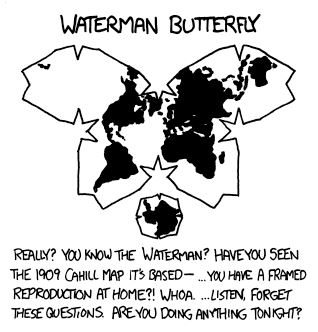

US has only 4% of the world’s population, there are now plenty of super-rich in China, India, etc. who like to flaunt i-stuff.


US has only 4% of the world’s population, there are now plenty of super-rich in China, India, etc. who like to flaunt i-stuff.


Yeah, but you just gave me an idea too, how about AI-directed canines? “apple-intelligence” applied to follow-your-nose. My dog loves to chase small spots of light, which might be a trick to steer them.


And if chinese buy iphones, do they now have to pay 84% tariff? - maybe HQ in europe solves that too?


As a global company, Apple could just re-establish itself in europe, e.g. Ireland, and continue trading with China, they can just put the US on hold for a couple of years.
Meanwhile for those who really addicted to istuff, coyotes can smuggle iphones across the border, so maybe this solves the fentanyl ‘issue’.


I’d like to have no phone at all, I don’t like small screens, nor being interrupted. Problem is that phone apps are now almost obligatory for IDs, transport tickets, passes, banking, etc. So I’d just like a phone-receiver (modem) with a sim card on a USB stick that can enable phone-app-stuff via my laptop or tablet. (Yes some tablets have data sim cards, but we still need sms and occasional phone functions for ‘verification’ etc.). Any suggestions?


I’m more interested in distribution of users and local-focus of communities than country-based instances, nevertheless the map does illustrate that Lemmy has huge gaps - no country instance in all of Africa, hardly any in Asia… What can we do to make it a more global conversation ?


Too true, and good analogy with building a house extension…


pH 7 being neutral only works at STP (lab temperature). Actually the dissociation constant Kw of water increases a lot across the normal range of seawater (0-30oC), so in tropical seas there’s a lot more of both H+ and OH- around. I’d imagine that molecules of early life could be stable at some temperatures - i.e. in some regions, while not in others.


So how about the Cahill Butterfly projection, …


Fine map, good to see the old names. But some of these routes are pretty impassable even today - for example I doubt the Wakhan corridor was ever a major route, even the bottom of that narrow valley rises above 4000m. And note Torugart pass (been there…) is north of Kashgar on the way to Issyk Kul (missing lake), not on the way to Osh. So, considering the mountains, I guess a larger fraction than indicated crossed the steppe further north - horses wouldn’t need roads or cities, but it’s easier.


Can use Scala to gradually transition away from java - convert code module by module, interop just works, until eventually no java left, can then compile instead as js, native or even wasm (i recently tried this for my climate-system model which evolved from old java). Also, btw, made in europe, not big-tech, and scala3 looks more like python.


Interesting. Five million years is not so long in geological time, so how is that such “exposed section of lithified sediment deformed by the megaflood” (note photo) are now above sea-level, did Sicily rise so much since then?


Strange that Genoa controlled off bits of coast (yellow) all the way to Crimea, Azov sea (is Tana now Azov?) , and Circassia, how did they manage all that? And who’s in that purple-coloured “Theodoro”?


Two thoughts:


I might try Friendica, although coming from lemmy I’d be more inclined towards Mbin, to combine topic-focus and people-focus.
However as a developer I first check the code repos and see that both are based on php, which seems rather old, and i doubt this would scale efficiently if the network really took off. Recall that twitter was once based on ruby (like mastodon is) and shifted to scala for such reasons. So I feel, these are exploring well the potential user-experience, but the code may need a fresh structure (if somebody knows this tech issue better, please say). It’s good to discuss these things, to help consolidate potential efforts.


A wee quote from the author of the original little red book …:
“the two slogans – let a hundred flowers blossom and let a hundred schools of thought contend – have no class character; the proletariat can turn them to account, and so can the bourgeoisie or others. Different classes, strata and social groups each have their own views on what are fragrant flowers and what are poisonous weeds”.
Seemed a good idea at the time (1957?), remember how that trick evolved thereafter …?


Indeed trade links relevant, so navigable rivers played a big role - before railways, our main transport was either boats or horses (or camels). Horses needed a lot of grass, which thrives in drier mid-continental climates where trees don’t survive wildfires. For example the Mongol empire was good at trade and connecting cultures, covered a huge area, but not (for long) near coasts, and still demanded intense tribal loyalty (elements of such culture was absorbed by the next empire which gradually pushed it back…).


At the end I read: “I found my ideal social network … with the functionalities of Friendica, the UX/UI of Sharkey and the stability and reliability of Mastodon …” - so - please forgive me if I missed something, what does this combination, do we have to make it ?
Maybe add some major tributaries - eg the Inn, Sava, Tisza … ? Sometimes, depending rain on the mountains, these have greater water flow.
Indeed it seems Trump picked up some ideas about “Juche” (national self-reliance?) from his best buddy “rocket-man”.